The development of information technology and the computerization of the population have made the dining table a place where one spends almost all day in this position. Almost everyone knows that there is an unpleasant pain in the spine. Pain in the spine, limbs, and numbness in the legs are the main symptoms of osteochondrosis. Also, if the early 40-year-olds had osteochondrosis, today's teens are already facing the disease in high school.
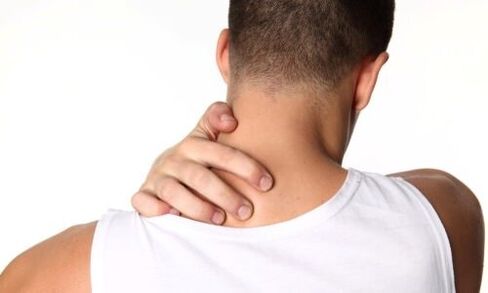
According to localization, osteochondrosis is divided into several types - cervical, thoracic and lumbar. One of the most common types of disease is called cervical osteochondrosis. It should be said that, due to its positioning, it triggers complications in the work of the brain, full of neurological diseases. From our article, you will learn more about the characteristics of this disease, its course, treatment and prevention.
Causes of cervical osteochondrosis
It may sound a little strange, but the cause of spinal osteochondrosis is. . . human life. Any excess load on the spine causes some deformation, which is why the disease occurs. Osteochondrosis can be prevented, cured, but only if it doesn't work. For those of you lucky enough not to suffer from pain, I would like to warn: analyze your level of spinal pressure - you will find out if you are at risk for osteochondrosis.
Therefore, the leading and most common cause of osteochondrosis in adults may be work, which involves constantly lifting heavy objects, such as loader work. In addition, working "seated" or "on the lap" in the office can trigger the disease, for example, sellers who are in a certain position for a long time can create a load on the same muscles, the spine.
Athletes are at risk for osteochondrosis due to heavy loads, or, conversely, due to low levels of physical development in those who do not exercise at all. There have been cases of morbidity even when athletes are actively participating in training but suddenly stop training. It is impossible not to mention the subsequent spinal injury leading to osteochondrosis. Affects the spine and flat feet, causing inconvenience due to the irregular shape of the foot, different load distribution on the vertebrae and discs.
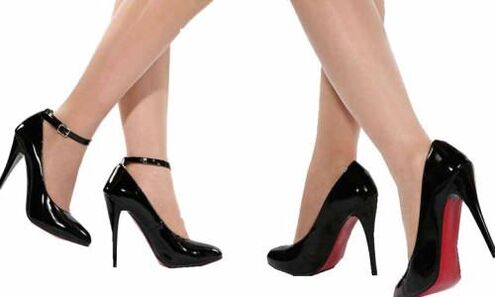
Osteochondrosis in pregnant women may be due to the same increased load, as well as women who often walk in high heels and have an overworked spine.
The cause of neck osteochondrosis may be hereditary or hereditary.
Spine disease may manifest itself due to impaired metabolism in the body, obesity, low immunity, poisoning, infectious diseases that reduce spinal function.
Over the years, the spine becomes more fragile, losing the elasticity, bone density and deformation of the discs. Age is another cause of osteochondrosis.
Finally, the impact on the environment and living conditions cannot be underestimated. Poor ecology, stress, lack of nutrients, vitamins and trace elements - all of these can trigger the development of cervical osteochondrosis. The symptoms of cervical osteochondrosis are very obvious. In order to stop the progression of diseases in time, they need to be understood. After all, each of us is partially at risk.
Symptoms and stages of disease
You can identify osteochondrosis with a simple movement—turning your head. Pain when turning is the first sign of cervical osteochondrosis. The following symptoms are muscle cramps, difficulty moving, numb fingers, and shoulder pain.
This type of disorder is called radiculopathy or cervical sciatica. A hernia can occur if a nerve root is compressed by a vertebra because of a violation of its location. In this case, the pain descends in waves from the shoulder to the fingers, and a tingling sensation is felt in the fingers and forearm. If the little and ring fingers are numb, the brachial nerve is affected, which is the area of 7-8 vertebrae. If the other three fingers - the problem is in the 5-6-7 vertebrae area, the central nervous system is affected.
In addition, the disease has symptoms related to brain function. Headaches that recur in cervical osteochondrosis are usually severe or painful. Maybe dizziness, cervical osteochondrosis, ringing in the ears, spots in front of eyes, blurred vision, hearing, dental problems. These signs of the disease suggest that the two vertebral arteries that carry blood to the brain are affected. Especially in those areas responsible for blood pressure, in the cerebellum, which controls our vestibular organs. This type of disease, called vertebral artery syndrome, is very common. Cervical osteochondrosis affecting the arteries is fraught with violations of the ability to move normally and even stroke.
There is also stimulated reflex syndrome. In this case of cervical osteochondrosis, the symptoms are similar to other types of disease, but the pain flares up suddenly after a resting state. For example, when a person wakes up after going to bed, he experiences a strong boredom pain in the neck.
Another disease very similar to heart disease - angina pectoris, when pain occurs in the chest and radiates to the shoulder, it can last for hours. This is a heart syndrome. An electrocardiogram can help differentiate osteochondrosis from heart disease, which will confirm that blood circulation is not disturbed and that the patient is worried about the spine, not the heart.
The course of cervical osteochondrosis is divided into several stages. In the first or preclinical stage, the interior changes slightly at the biochemical level. A person may experience some inconvenience in holding one position for long periods of time during physical exertion. The muscles of the back and neck get tired quickly.
The second stage of the disease is called the stage of increased changes in the nucleus pulposus. At this time, the intervertebral disc is deformed, the metabolism in the nucleus pulposus is disordered, and some cells die. As a result of these processes, the distance between the vertebrae decreases, which subsequently leads to nerve compression and spasm. A person feels pain in the damaged area of the spine.
In the third stage of the disease, complete or partial destruction of the annulus fibrosus occurs. A fissure appears, from which the nucleus pulposus protrudes, disrupting the tightness of the vertebral junction. The spine becomes abnormally mobile and the vertebrae are partially displaced. This can cause pain throughout a person's back, movement disorders, and loss of sensitivity in the extremities.
The most severe stage IV osteochondrosis manifests as the regeneration of the intervertebral disc, a so-called vertebral fusion. The nucleus pulposus replaces the cartilage, the pain subsides, and the spine is again supported. But, unfortunately, the consequences of this spinal change are limited human mobility and even disability.
The spine has three important functions in the human body. These are support, protection of the spinal cord and depreciation during exercise. Our ability to move and survive comfortably depends on the spine. Back pain should not be viewed as a temporary and random phenomenon. Take it as a rule: If you experience pain when turning your head smoothly, you should contact a neurologist.
Osteochondrosis in children
Osteochondrosis in children is not as common as in adults, but is a congenital or genetic disorder. However, since spinal deformation can lead to adverse consequences and cause great harm to children's physical development, we decided to highlight this topic separately and draw parents' attention to their children's osteochondrosis.
A child's spine is more sensitive to injury, freezing, and lack of nutrients to form and develop. As already mentioned, this is the cause of osteochondrosis. Therefore, it is important to pay attention to the nutrition of children, remember to be rich in calcium and other trace elements, to be diversified and easy to use. In the case of back injuries and falls, especially at a young age, a doctor must be consulted for examination and further treatment may be required if the disease is diagnosed. By the way, osteochondrosis in children can be the result of birth trauma.

Osteochondrosis occurs in children and is due to genetics when the fragility of the vertebrae is passed on through inheritance. If, in the case of childhood spinal disease, the growth area of the bone, the area where the bone grows, is affected, this can also lead to impaired growth and overall development in the child. Symptoms of osteochondrosis in children are similar to those in adults, but the pain is milder and movement is not disturbed. Suffering from cervical osteochondrosis, may faint, dizziness.
See your doctor right away if your child has a prerequisite for osteochondrosis or if you suspect a back problem. The sooner you catch the disease, the sooner you can get rid of your child.
Diagnosis of cervical osteochondrosis
As with other diseases, the diagnosis of cervical osteochondrosis begins with a doctor's examination. In this case, a neurologist. The doctor examines the patient in various positions - standing, sitting, lying down, examining the state of the spine during movement. Draw attention to the posture, the position of the median sulcus in the back, the position of the shoulder blades, the shoulders. In addition to visual inspection, tactile inspection is also mandatory. Locate the lesion under the guidance of the chief complaint, examination, and use special vertebrae counting techniques. In addition, patients receive X-rays or magnetic resonance imaging to examine the spine more closely to find out the stage of the disease. After diagnosis, a prescription for the treatment of cervical osteochondrosis is prescribed.
treat
Treatment of cervical osteochondrosis is often complex. Mostly it is based on some mandatory points. One of the main ones is the correct motor mode. The correct meaning is to move without shaking your head. Any rapid movement is not good for the vertebrae. Your doctor will most likely prescribe a special medical soft collar to immobilize your neck during treatment.
To think about something from their own perspective, the patient should turn his head slowly. If you feel uncomfortable in your neck, do some special exercises and give yourself a massage.
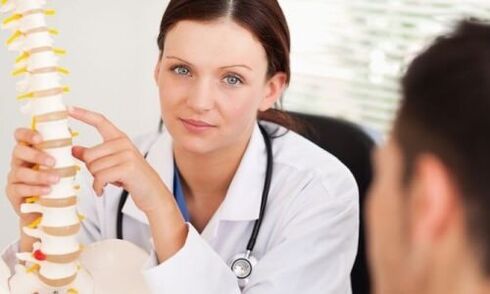
A mandatory phase in the treatment of osteochondrosis in the acute phase is drug therapy. Doctors prescribe non-steroidal anti-inflammatory drugs to get rid of inflammation and swelling. Be sure to take analgesics to help ease the course of the disease. If osteochondrosis causes muscle spasms, then a drug is also prescribed to relieve the spasms and pain. B vitamins, which improve brain function, help fight stress and build muscle, will also be prescribed. Antidepressants are prescribed if the patient is depressed.
Without external preparations - gels, ointments, creams, you cannot do without osteochondrosis. Known anti-inflammatory drugs will act directly on the foci of the disease. One type of ointment is called a chondroprotectant, which is an ointment that contains components that restore the cartilage tissue of the intervertebral disc. And, of course, the patient needs an ointment or cream for a therapeutic massage, which is also essential.
Manipulative therapy for osteochondrosis
Many people with osteochondrosis seek the help of a chiropractor. This treatment can be included in the complex if there is an anatomical change in the patient's spine, hernia or disc displacement. With the right treatment, it does produce positive results. But when looking for experts, be careful. Before agreeing to treatment, please ensure that the specialist has a medical degree and performs traditional treatment, has completed additional training in the specialty of neurologist and chiropractor, and holds a validating certificate. Operator experience is also important. After all, the treatment itself requires clear movement, and if used incorrectly, it can cause damage. The principle of manual therapy is point impact on the structural components of the spine. With a quick push, the joint that moved from the correct position returns again. There is no doubt that proper treatment is a very effective way to treat cervical osteochondrosis.
physiotherapy
Therapeutic exercises for cervical osteochondrosis will allow you to fight the disease even in the workplace. In addition, simple exercise can also be very good at preventing spinal diseases.
So, take your eyes off the screen, lean back in your chair, and learn some useful exercises.
Sit in a chair with your feet shoulder-width apart. Relax and put your hands down. Slowly lower your head until your chin touches your chest. If it doesn't work, that's ok, lower it as much as you can, lower it as much as you can. After that, slowly lift your head and tilt it back until it stops. Head straight back to the starting position and repeat the exercise 5 times.
Without getting up from the chair, gently turn your head to the side. Start in one direction, then return to the starting position, then turn in the other direction. 5 times each time.
Turn your head and go to the slope. The exercise is also done sitting, slowly tilting your head to the left, then back, then right. They kept their heads down, trying to put their ears to their shoulders. Do at least 5 exercises on each side.
This will help stretch the neck muscles and the rest of the workout. In the seated position, slowly tilt your head back, hold this position for a few seconds, then slowly begin to turn your head, without raising your head, to the left, then to the right, for a total of at least 10 turns.
You can also perform exercises to warm up your shoulder muscles without leaving the workplace. Sitting in a relaxed position, start by rolling your shoulders forward 5 times, then back 5 times. Do this slowly and carefully, feeling every muscle.
This will help stretch your shoulders and an exercise everyone in kindergarten knows about. It can be done as needed - sitting or standing, as the case may be. You slowly place your left hand on the right side of your shoulder, touch your fingers to your ear and lower it. In the same way, place your right hand on your head and your left ear.
Now do more warm-ups for the neck muscles. Put your palm on your forehead and start pressing your forehead against your palm, resisting with your hands. Hold this pose, neck tight, and count to 5. Then relax and repeat the exercise twice.
The exercise is similar to the previous one. But now other neck muscles will work. You fold your hands, or more conveniently, both hands behind your head, place them on the back of your head, and start pressing your head against your hands. Practice 3 times for 5 seconds each.
Now we stretch the outer muscles of the neck. There is only one solution—the head is on the hand, and the hand resists. You place your left hand on your left temple, press down, count to 5, rest for a few seconds, then repeat 2 more times. In the same way, work on the right side of the neck.
Finally, do a little warm-up in a standing position. For this, it is better to choose a free space in the office. Feet shoulder-width apart for better balance. Extending your arms in a free state, they begin to rotate forward 5 times in sync, then 5 times backward.

After a short break of 10-15 minutes, you will feel less tension in your back and neck muscles, allowing your eyes to take a break from the monitor and relax. Such work breaks are useful, and in many modern offices they even practice getting colleagues to quit in large numbers to warm up. Don't ignore a simple rule - warm up every time you feel tired and nervous. Gymnastics for cervical osteochondrosis is an excellent way to treat the initial stage of the disease and to effectively prevent it. In cases of more severe diseases, a course of kinesiotherapy (physical therapy exercises) is prescribed.
Exercises for the treatment of cervical osteochondrosis
Exercise therapy for cervical osteochondrosis is irreplaceable. A set of exercises will improve the function of the spine, help maintain muscle tone continuously, and relieve tension. Exercise requires some free time and a warm exercise mat on the floor. They can be done at home in the evening or in the morning before work. Of course, it is recommended to do this between meals.
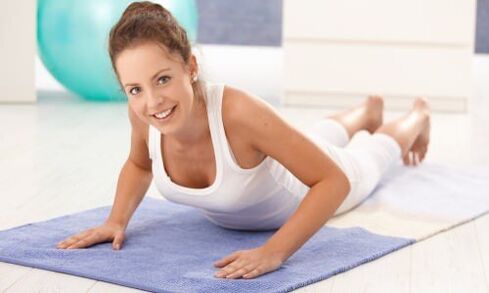
Lie on your back on the floor and stretch your arms along your torso. Look forward and begin to gradually look left and right, 4 times in each direction. After looking away, also start looking up and down 4 times. Immediately after the lateral warm-up, roll your eyes toward the clock and then in the opposite direction.
In the same position, lie down and turn your head in different directions. Gradually, slowly. After 4 turns in each direction, continue tilting your head to the left and right shoulders.
You can lift your head and do the exercise. Also, while lying on a flat surface, lift your head off the floor and tilt it toward your chest, trying to touch your chin to your chest. Get as close to your head as possible. All this without sudden movements no more than 4 times.
When doing cervical osteochondrosis exercises, you need to remember that not only the cervical area but the entire body needs to be warmed up. So, lie on your back, complete the first simple exercise, and after you warm up, move on to the next exercise. Extend your arms out to your sides and turn to one side, trying to touch the opposite side with your hands and feet, but don't roll over to your stomach. Turn around as you inhale, and return to their original position as you exhale. No more than 5 turns.
The next exercise is to sit from a prone position. Lie on the floor with your arms stretched along your body, and you need to stand up slowly, leaning against your hands. This is quite a difficult exercise for osteochondrosis, so again, you need to do it carefully and slowly 3-4 times.
Lie on your back, bend your legs and press toward your stomach, tuck your knees with your hands. Then gently pull your head over your feet and touch your knees. Further - also carefully return to prone position. Do the exercise up to 5 times.
You lie down with your legs bent at your knees to belly level and your arms outstretched. Alternately rotate your body left and right, up to 5 times in each direction.
Don't interfere with abdominal exercises. Roll over and extend your arms along your body. Begin to lift your head off the floor, then your shoulders, torso, and focus on your legs and hips. Then go back to the starting position and do up to 5 reps.
Breathing exercises are useful for osteochondrosis in the neck area. After taking a short break from the previous exercise, lie on your back with your arms crossed on your stomach. Inhale deeply and slowly, blowing out of your stomach, and also exhale carefully, pulling your stomach in. Do 5 breaths and exhales.
Place one hand on your abdomen and the other on your chest. Take a deep breath, tense your muscles, breathe out, relax. The number of breaths is also 5.
These exercises are introductory only and should not be considered complete treatments. Rather, these are recommendations to prevent the disease or its development. Therapeutic exercises for cervical osteochondrosis are chosen by the physician according to the needs of the patient.
self massage
Massage is one of the necessary and enjoyable procedures in the treatment of cervical osteochondrosis, prescribed by a doctor. Of course, it's impossible to try and repeat professional massages at home, and when relatives are involved, it's really only a health worker to deal with. But light kneading movements can be done on your own to distract and relieve stress in the middle of the workday. By the way, a massage would be a great addition to gymnastics.
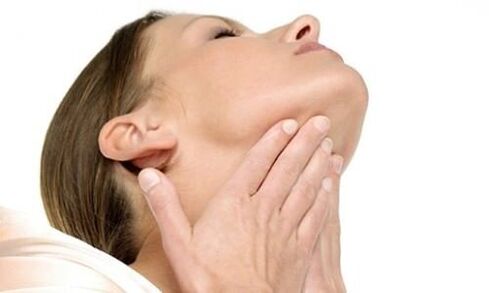
So, feel the pain in your neck, lean back in the chair and relax your back. The massage begins by stroking the neck with the palms of your hands from top to bottom, from hair to shoulders. After stroking, turn your palms to your neck and move from top to bottom several times, pressing gently. Then start sanding. Place your palms on the back of your head so your fingers converge in the middle of your spine. Rub your body and move your hands from the center of the vertebrae to the sides of the neck, from top to bottom. You can massage your neck with your fingertips, rubbing it in circular motions. Then start pinching the skin and muscles, grasping them with your index finger and thumb. Then use your palms to stroke your neck to finish the massage.
Self-massage for cervical osteochondrosis will help relieve pain and muscle tension.
Healing with folk remedies
For any disease, the most popular folk remedies are herbal preparations. Often, in the initial stages of the disease, cervical osteochondrosis can be treated with folk remedies. Herbs like peppermint, St. John's wort, calendula, yarrow, licorice root, chamomile, birch, and strawberry leaves help fight musculoskeletal disorders. Make a tea with these herbs and drink it regularly as a tonic and preventive measure.
You can also take a herbal bath. You need at least 300 grams of dried plants per bath. A pine bath helps a lot. Grate the needles of conifers, pour in boiling water and cook for 20 minutes. Then filter, add to a hot water bath and steam for half an hour.
You can and should bathe with chamomile, which has anti-inflammatory properties and heals the body perfectly. Pour chamomile into boiling water, hold for up to an hour, filter and add to the water.
A quick compression with an improvised approach will help relieve back pain. Everyone has potatoes and honey at home. It is recommended to use the folk method to make such a compress: Grate vegetables and mix with honey in a ratio of 1: 1. The composition is applied to gauze and applied to the sore spot. Relief is guaranteed, but, alas, not for long.
Ginger garlic ointment works in much the same way. Rub them on a grater and mix 1: 1, add a little butter or petroleum jelly to spread, and rub on the sore spot. It also reduces pain and inflammation, but does not cure the disease. For osteochondrosis, a mandatory visit to a neurologist is required, who will prescribe a complete treatment regimen.
Finally, I would like to say something about the basic code of conduct for osteochondrosis. First, keep your back straight and your head straight. Set up your workspace to these standards, and if books are low, place a book under the monitor, or find a taller chair.
Do not lift heavy objects unless absolutely necessary. If you really must carry the weight, don't do it in a bent position, but lift the bar like a powerlifter - sit down, then stand up with the weight on your back.
Don't let your back get too cold, protect it from drafts. A huge selection of stylish and stylish tank tops that will keep your back warm at any time of the year and in any situation.
More sports, swimming, gymnastics, horizontal bar hanging.
With all the secrets to preventing osteochondrosis from gymnastics, self-massage and folk remedies, share with your office friends. So not only can you insure against your own spine disease, but you can also help your colleagues avoid back pain and fatigue. healthy!


























